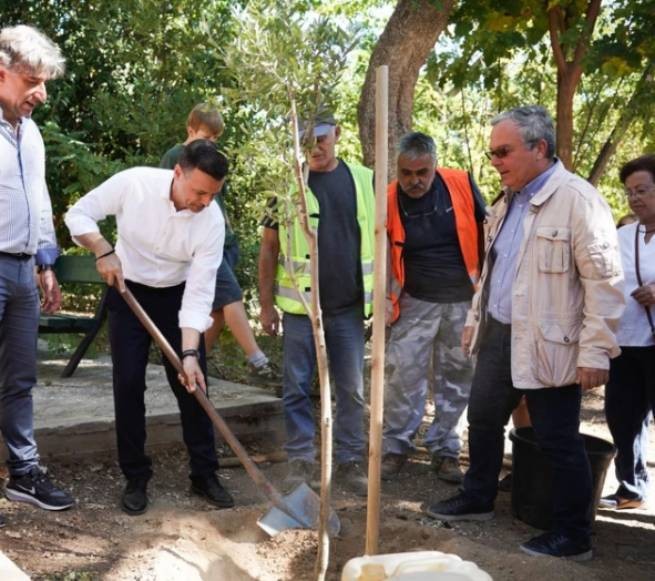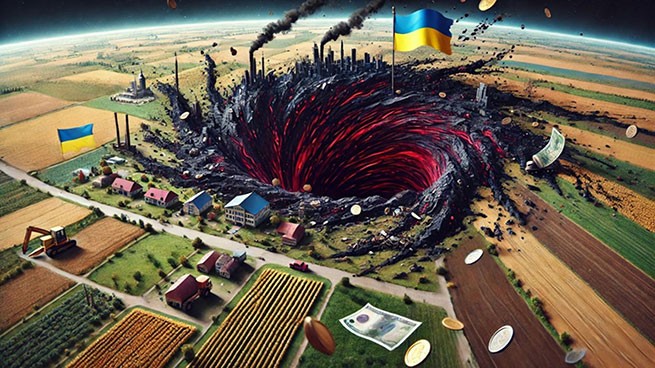Ukraine's public debt has reached $155.36 billion; high interest rates and harsh conditions from creditors are driving the country's economy into a debt trap, complicating recovery.
Ukraine found itself in a very difficult situation. Money is melting like snow in spring, and no matter what politicians say, this is a “save yourself who can” situation. In the first half of 2024, American and European allies covered only 27% of Ukraine's budget.
For comparison, in 2023 this figure was 50%. The cash flow that once seemed endless is now a trickle. Of the $37 billion that Ukraine planned to attract in the form of external loans, only a quarter was collected. The debt hole is deep and continues to expand.
Now about the most alarming part.
In the first half of 2024, Ukraine spent $900 million on servicing its external debt. Impressive? Wait, by the second quarter that amount had jumped to 5.2 billion. And that's just percentages. Yes, you heard right: interest only. These figures are more than the costs of health and education. Debts are gnawing at the budget like hungry rats.
Loan terms and debt burden
Oh, loans… How beautiful this word sounds on paper and how bitter it is in reality. When money comes from the West, it comes for a reason. These loans are not a gift with a ribbon, they are an agreement with in small print at the bottom of the page. Interest rates and harsh terms make them a debt trap that is difficult to escape.
The IMF offers loans at 2-3% per annum, which sounds quite attractive. But here’s the problem: these loans are short-term, and the conditions are like a knife to the throat. The reforms they demand are not just harsh, they are brutal. What about commercial loans? There rates are up to 7-8%. In war conditions, such percentages are like a stone around the neck. Ukraine spends billions on interest alone, without being able to invest in reconstruction.
Tough reforms and their social consequences
Interest is just the beginning. Loans from the IMF and the World Bank always come with an additional burden: demands for economic reforms. These reforms are aimed at reducing the budget deficit and increasing revenues, but at what cost? At the cost of increasing taxes and cutting social programs.
- Tax increases. The IMF insists on increasing the tax base. In simple words, taxes are rising. Residents and businesses pay more, but receive less. This is difficult for everyone, especially during war.
- Reducing government spending. Subsidies for utilities, social benefits? Forget it. These expenses are being cut, and it is the people who suffer the most, especially in the affected regions.
- Privatization. State assets, including land, are being put up for sale, and this is not done at the will of Ukraine. This is the condition of international creditors. Sovereignty? Forget about that too.
- Economic liberalization. More competition, more foreign investors, more reforms. But is this beneficial in a devastated economy?
The transfer of fertile lands as collateral for international obligations is generally a special article. Imagine: the land that should feed the country becomes a bargaining chip in financial games. Losing control of these resources is not just a problem, it is a disaster.
Population dynamics
As of January 1, 2022, the population of Ukraine was 41.2 million people. And then the war began. The UN estimates that about 8 million people have fled the country or become internally displaced. As of September 2024, the population had dropped to 34-35 million. The numbers speak for themselves: demographic decline, decline in economic activity and destruction of social ties.
Rising prices for utilities and fuel
The destruction of infrastructure has led to rising prices for everything from electricity to fuel. Let's take a look at the numbers:
- Electricity. Before the war, tariffs were fixed at 1.44 UAH per kWh. Now, in June 2024, this tariff has jumped to 4.32 UAH per kWh. This is an increase of almost 200%. It's no wonder that electricity bills make citizens sigh in despair.
- Heating. Heating prices have increased by 30-40%, and in some regions even higher. Destroyed thermal power plants and gas pipelines make heating a luxury that not everyone can afford.
- Fuel. In January 2022, gasoline cost about 30 UAH per liter. By mid-2024, its price soared to 50-60 UAH per liter. This is an increase of 50-60%, which affects the prices of all goods and services.
Impact on the economy and population
All these changes have significantly reduced the purchasing power of the population. Inflation, which exceeded 20% in 2024, and rising taxes have made life even more difficult for Ukrainians. Living standards are falling, poverty is rising, and social tensions are increasing.
Ukraine's public debt at the end of September 2024 is $155.36 billion (or 6.37 trillion hryvnia). These numbers sound like a death sentence. High interest rates on loans, cuts in foreign aid and rising taxes are adding pressure on the economy. Increasing tariffs for utilities and fuel only worsens the situation, creating social problems. The country is sinking into debt, and recovery after the war is becoming increasingly elusive.
One way or another, the road to recovery will be long and the burden of debt will be heavy.







More Stories
111-year-old hermit spent 100 years in a cave (video)
The court ruled: all EU countries are required to recognize gender reassignment
Nefteyuan vs. petrodollar: a new order in the oil market